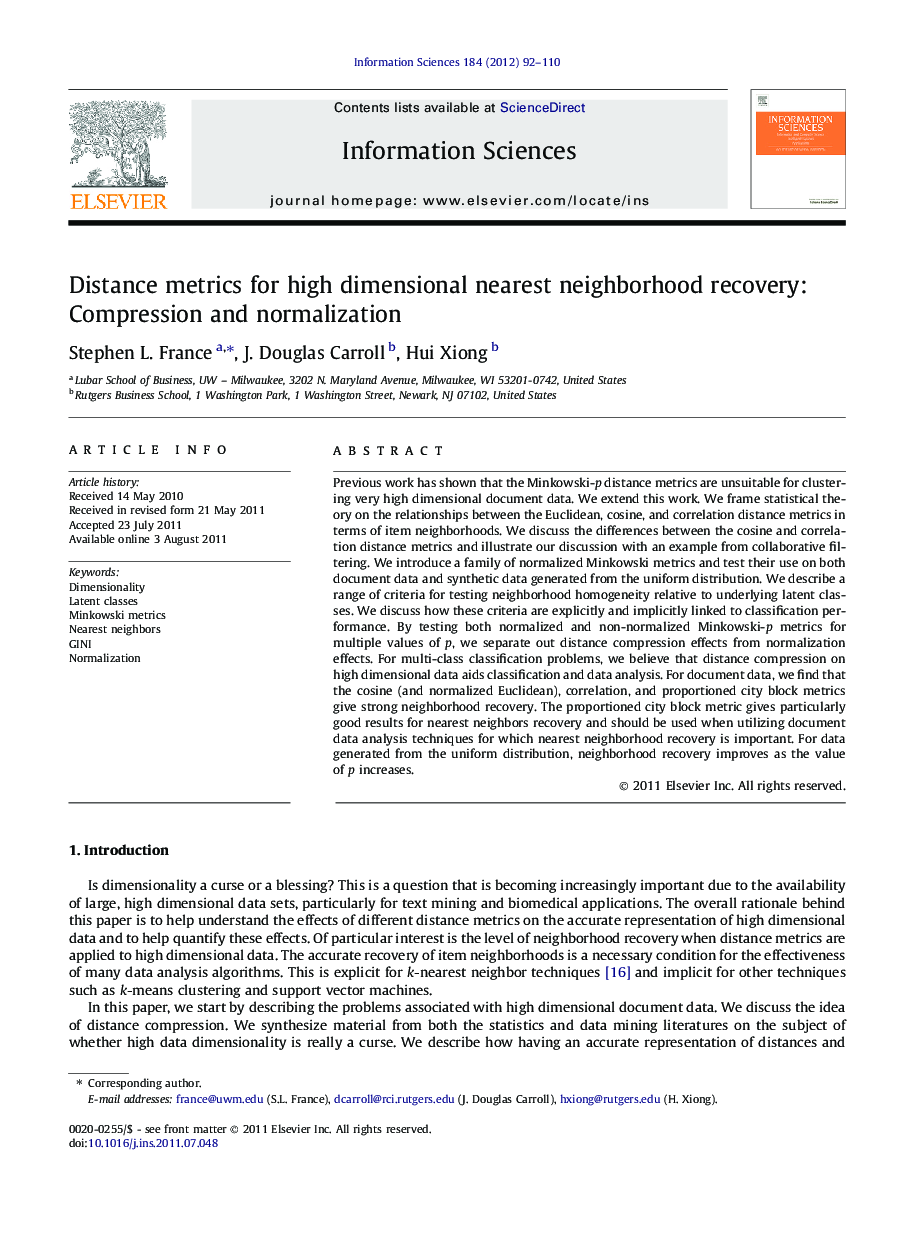| Article ID | Journal | Published Year | Pages | File Type |
|---|---|---|---|---|
| 393857 | Information Sciences | 2012 | 19 Pages |
Previous work has shown that the Minkowski-p distance metrics are unsuitable for clustering very high dimensional document data. We extend this work. We frame statistical theory on the relationships between the Euclidean, cosine, and correlation distance metrics in terms of item neighborhoods. We discuss the differences between the cosine and correlation distance metrics and illustrate our discussion with an example from collaborative filtering. We introduce a family of normalized Minkowski metrics and test their use on both document data and synthetic data generated from the uniform distribution. We describe a range of criteria for testing neighborhood homogeneity relative to underlying latent classes. We discuss how these criteria are explicitly and implicitly linked to classification performance. By testing both normalized and non-normalized Minkowski-p metrics for multiple values of p, we separate out distance compression effects from normalization effects. For multi-class classification problems, we believe that distance compression on high dimensional data aids classification and data analysis. For document data, we find that the cosine (and normalized Euclidean), correlation, and proportioned city block metrics give strong neighborhood recovery. The proportioned city block metric gives particularly good results for nearest neighbors recovery and should be used when utilizing document data analysis techniques for which nearest neighborhood recovery is important. For data generated from the uniform distribution, neighborhood recovery improves as the value of p increases.
